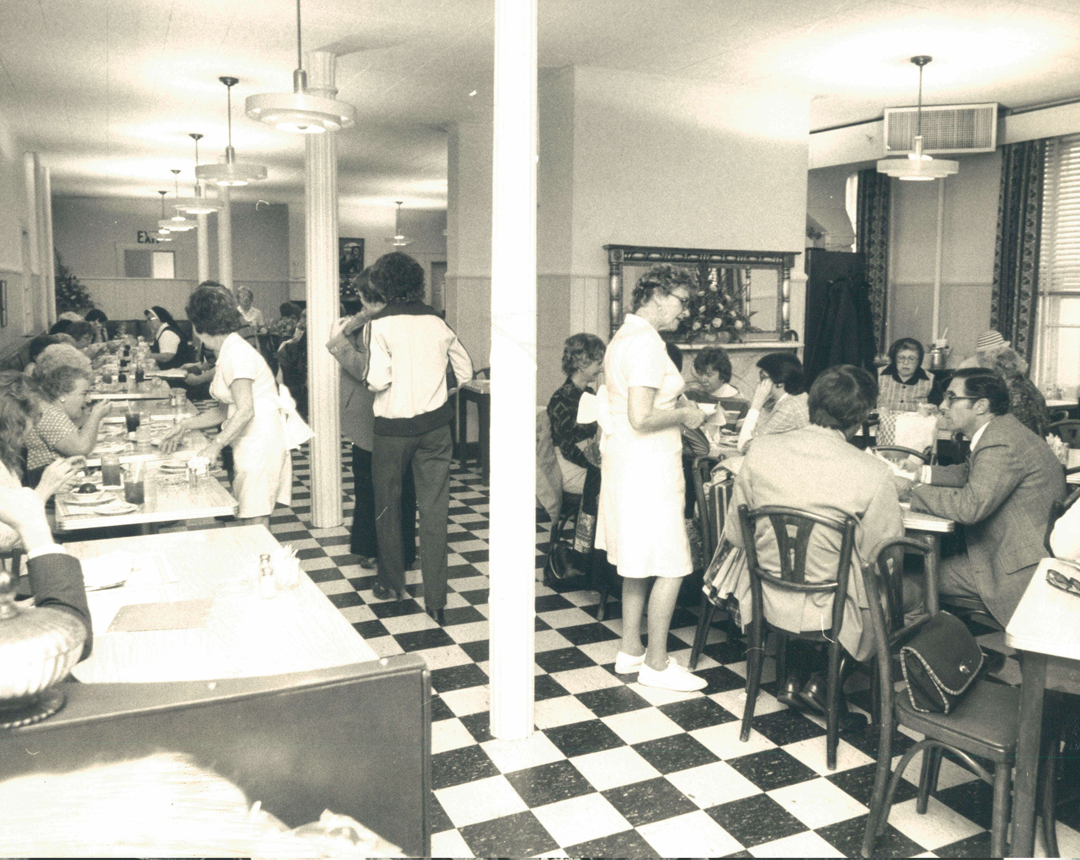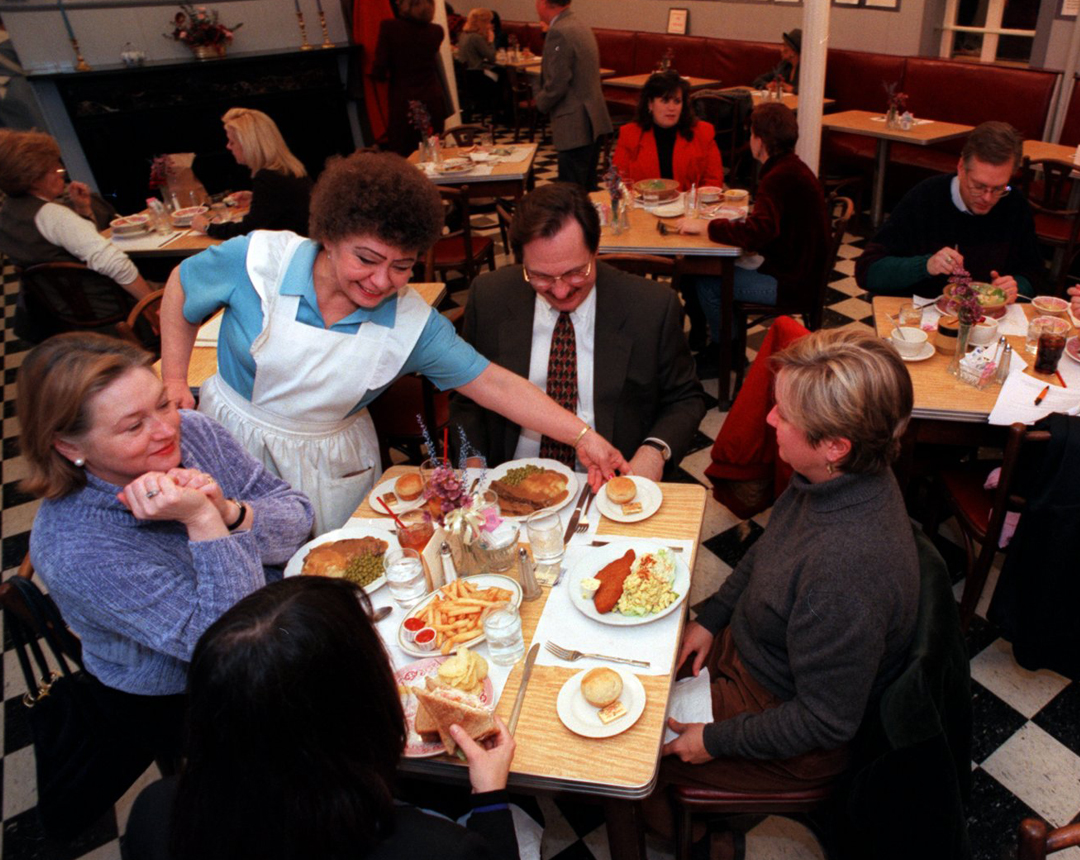The Lunchroom
History of the WIE Lunchroom
When the Woman’s Industrial Exchange first moved out of its founder’s home and into 33 North Charles Street, the board was excited to find use for each of the rooms in the building. The room behind the consignment shop proved to be the perfect spot for a tea room.
In its early days in the late 1800s, the tea room was used to host social gatherings and events for women of the upper classes.
By 1905, the Exchange had developed the room into a lunchroom that offered outside tray service, school lunches, and counter service, with menu items including marmalades and salads. The lunchroom became a spot where wealthier women would dine for lunch when out shopping in town.
By the 1940s, the tea room became a modern restaurant offering daily breakfast and lunch. From the mid-1900s onward, the customer population shifted to serve mostly the business class of Baltimore who dined there for their lunch break. The historic significance of the building allowed the lunchroom to become a spot for tourists to stop at as well. The lunchroom became so iconic that it was even featured in the 1993 film Sleepless in Seattle. The appearance of the Exchange in the movie depicts the main character and her friend dining in the lunchroom for their lunch break from their jobs as journalists. The two are served by Marguerite Schertle, one of the most well-known Exchange waitresses in Baltimore.
In 2001, the Exchange closed for the first time as more waitresses and consignment shop employees were retiring and the dining room was being renovated. The rich history of the lunchroom at the Exchange has been documented and referenced in many books and articles about famous restaurants and waitresses.
Lunchroom Menu and Other Facts
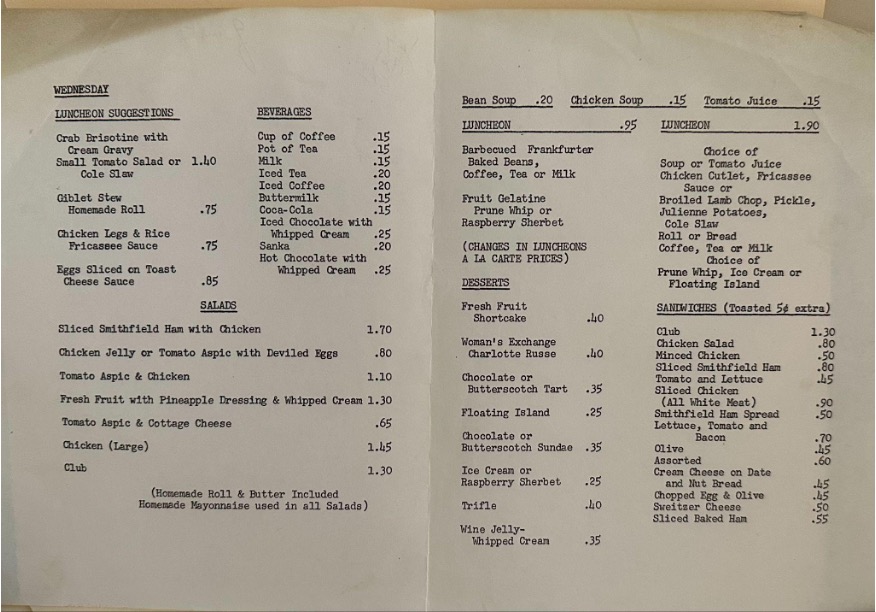
WIE Menu (1961), WIE Archive
The lunchroom was known for serving the Baltimore delicacy of tomato aspic. The customers raved about Miss Dorthea’s, the cook’s, secret recipe as many cited tomato aspic with chicken salad as their favorite dish. Other classics such as deviled eggs, chicken pot pie, and tuna fish sandwiches with iced tea were also served at the Exchange.
Judith Rousuck, a regular at the Exchange, stated “Miss Dorthea did all of the cooking for this entire place–the restaurant, the counter, everything! I am deathly allergic to garlic so the waitresses would always write no garlic and Dorthea would get that and say ‘Oh Judy’s here!’” She also recalled that there was a special every day and Monday’s special would always be potpie.
In terms of treats, Baltimoreans would go out of their way to stop at the Exchange’s bakery early in the morning to grab a lemon meringue pie or other delicious sweets before they were sold out. Layne Bosserman, an Exchange waitress recalled that “if you didn’t claim a piece [of lemon meringue pie] within the first 15 minutes of the lunchroom being open, you were not getting a piece. People would call hours before or the night before saying ‘I’m coming in tomorrow and I want three pieces of pie’ and so all the pies were already divided up” before the Exchange even opened.
She also remembered that chicken pot pie was another item that would be sold out regularly.
Bosserman stated “cupcakes were 50 cents so it wasn’t unusual that I would get a cupcake with orange icing–that was my favorite. If they had one, I bought one.”
Miss Willy (Wilhelmina Godwin) worked the bakery counter and was known to steal one or two bites of ice cream from the fridge when she thought no one was looking.
Bosserman also described the elaborate dumbwaiter and pulley system the Exchange used to take and prepare orders for their customers. The waitresses would put the paper order slip into a box attached to a pulley that had a bell. They would drop the box, which would ring the bell, to the basement where Miss Dorthea was working in the kitchen. Miss Dorthea would then read the slip, make the order, and place the order in the dumbwaiter. The dumbwaiter had a rock that Miss Dorthea would bang to let the waitresses upstairs know that an order was ready. The waitresses would then pull the dumbwaiter up and deliver the food to the customers.
After the Exchange closed its lunchroom for the first time in 2002, much to Baltimore’s dismay, Miss Dorthea moved on to find work in other local restaurants. The lunchroom then opened and closed multiple different times throughout the early 2000s, but ultimately closed after its final revival as the Woman’s Industrial Kitchen which opened in 2011 and closed in 2014. The Exchange, lunchroom and all, saw its final closing in 2020.
The Baltimore community continues to long for its historic lunchroom with well-loved waitresses who served Miss Dorthea’s iconic dishes to this day.
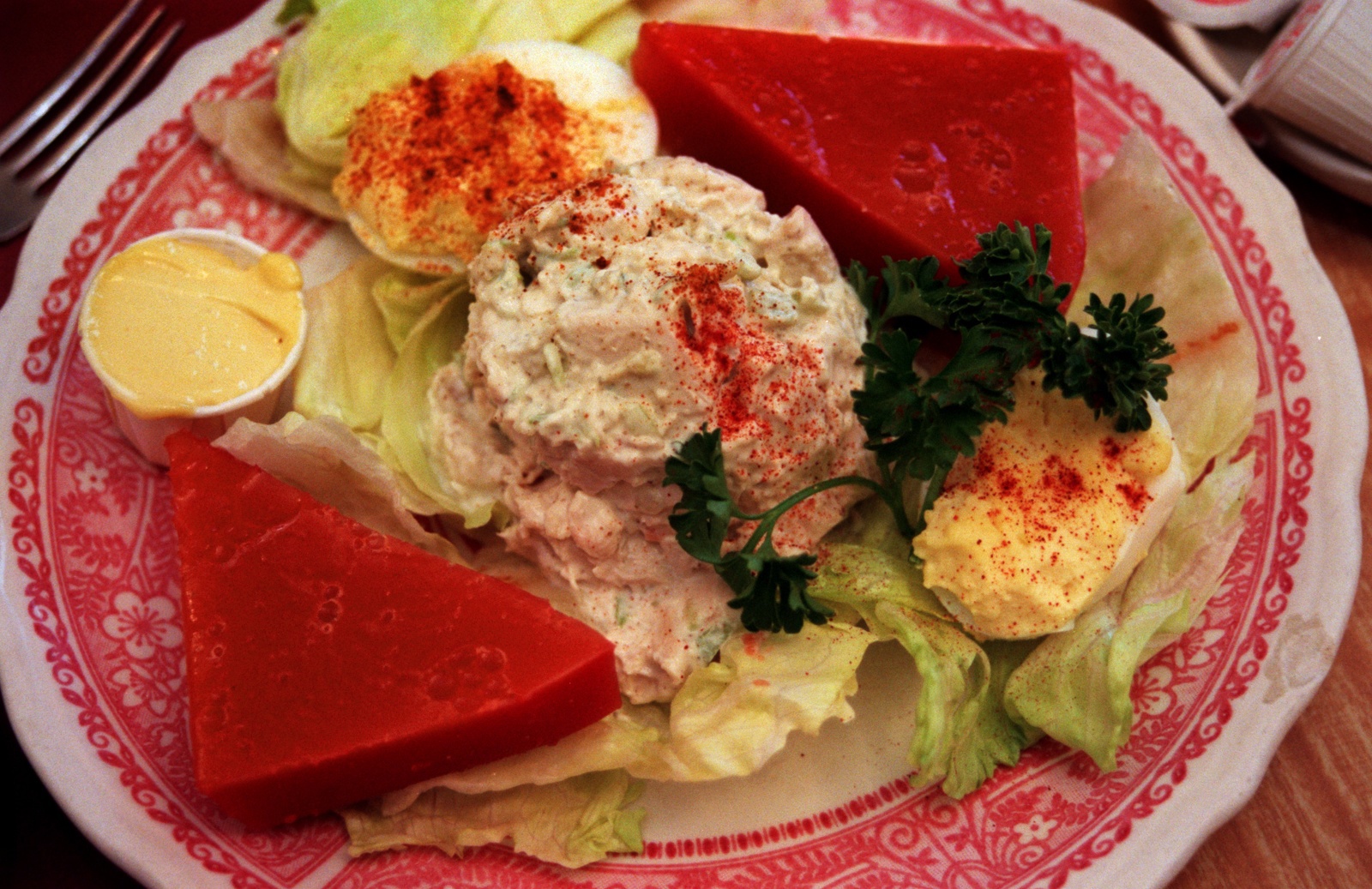
Tomato Aspic and Chicken Salad Dish, Photo Courtesy of the Baltimore Sun
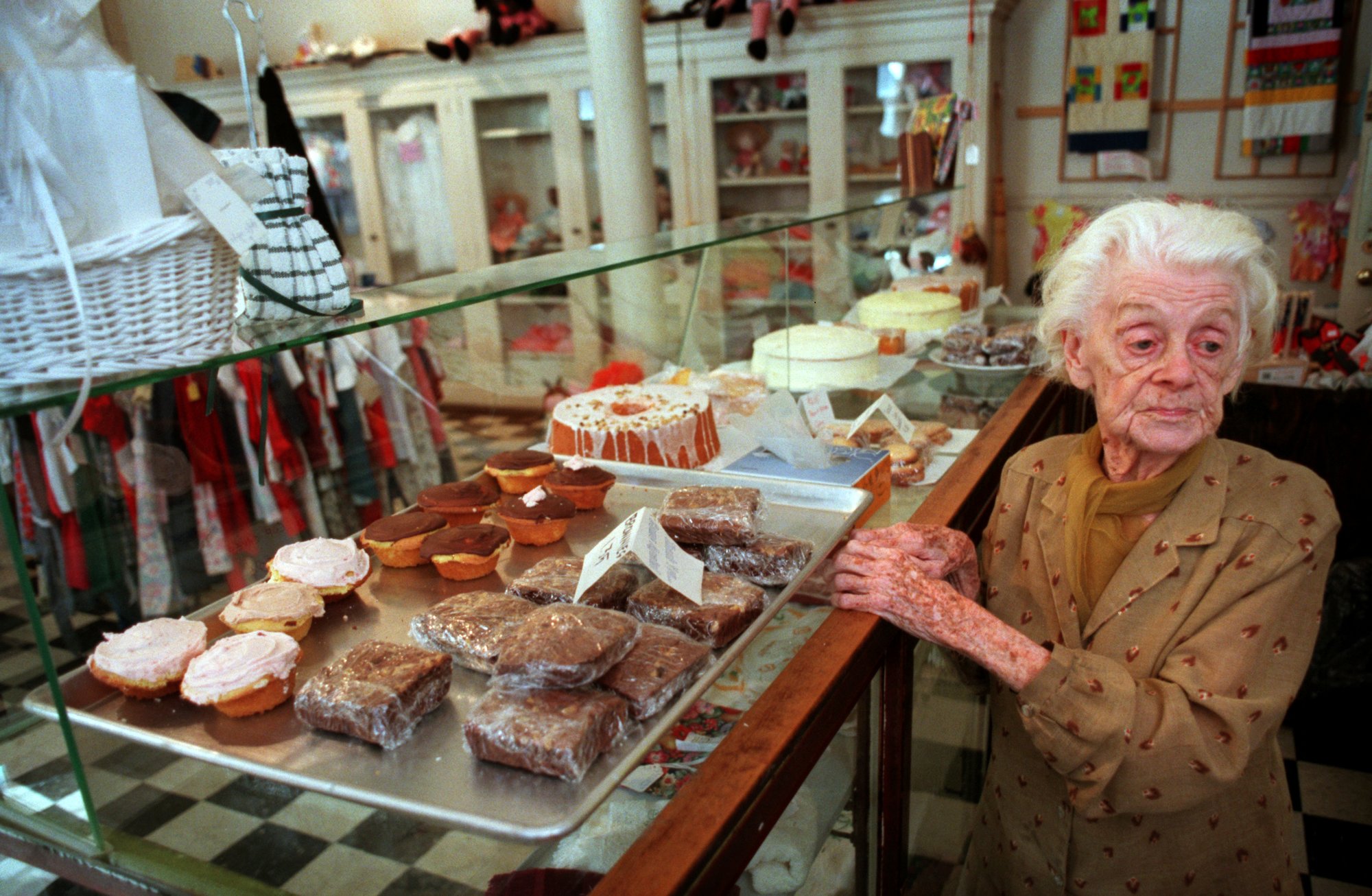
Miss Willy (Wilhemina Godwin) December 31, 2000, Photo Courtesy of the Baltimore Sun

Miss Dorothea Wilson (June 1990), WIE Archive

WIE Lunchroom Waitresses
One of the most iconic parts of the lunchroom was the waitresses. They were known not only for their blue uniforms with white aprons but also for their kindness and diligence.
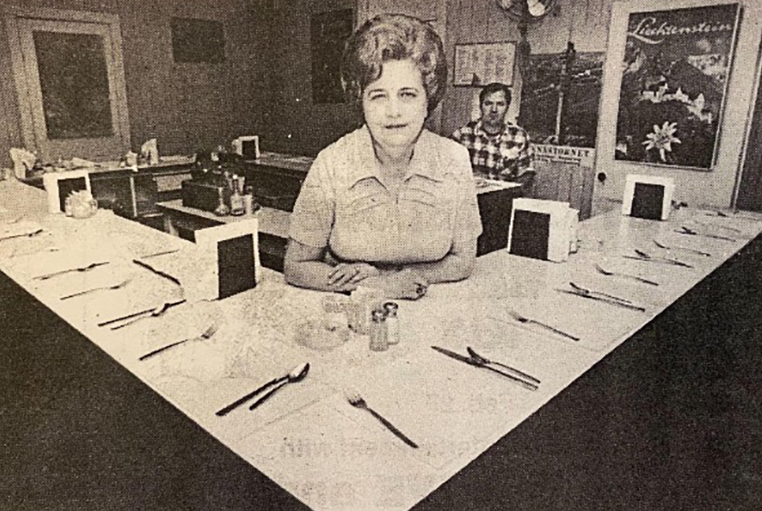
The Down Under Club
One customer, Mr. John Clabaugh Leitch, decided that the lunch counter in the basement of the Exchange would be the perfect place for his club to meet and dine regularly.
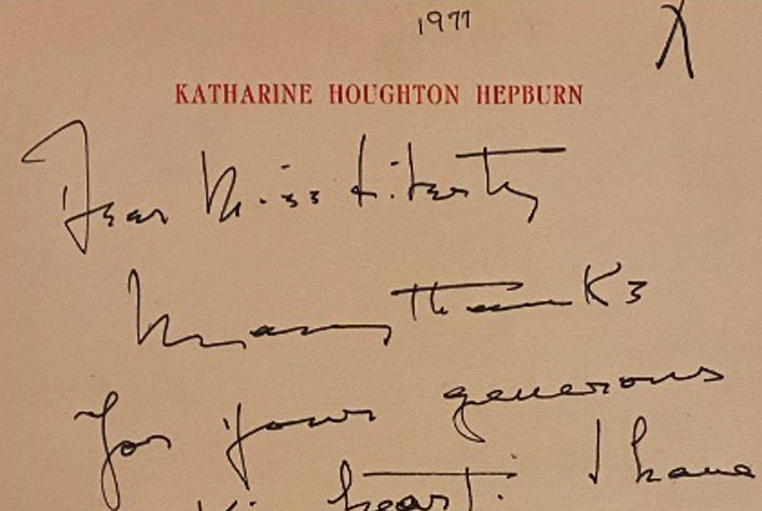
Famous Lunchroom Guests
The lunchroom kept a book that held the signatures of every guest who dined at and visited the Exchange. The book holds the names of wealthy and well-known Baltimorean families…

